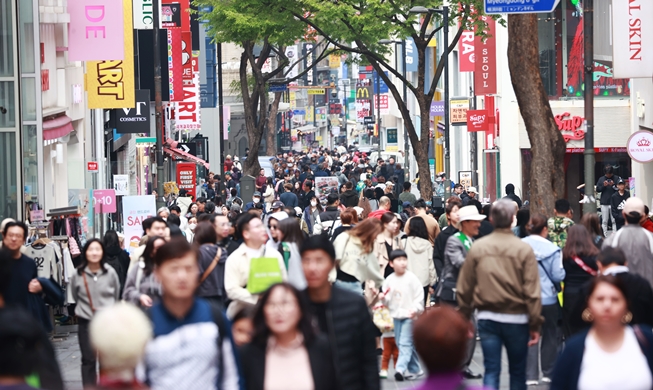-
 Korea.net's 24-hour YouTube channel
Korea.net's 24-hour YouTube channel- NEWS FOCUS
- ABOUT KOREA
- EVENTS
- RESOURCES
- GOVERNMENT
- ABOUT US
By Charles Audouin
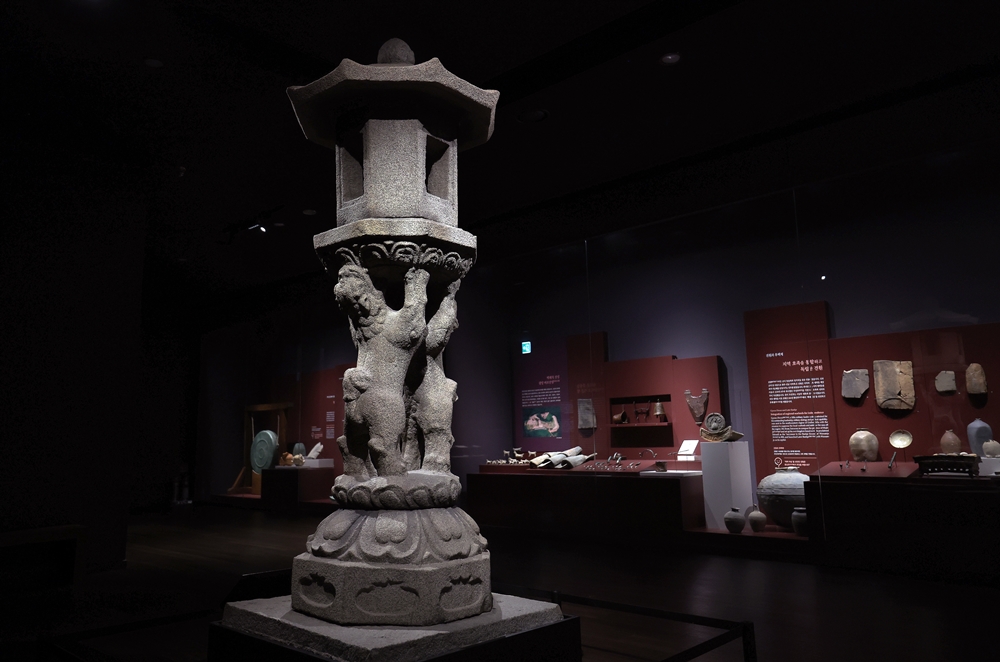
Designated a National Treasure on Dec. 20, 1962, the Twin Lion Stone Lantern of Jungheungsanseong Fortress, Gwangyang has as its main feature a twin lions in its middle rather than a circular or octagonal body. (Lee Jun Young)
On the second floor of Gwangju National Museum are artifacts that shed light on the main history of the southwestern metropolis of Gwangju and Jeollanam-do Province since the era of northern and southern states between the seventh and 10th centuries during the unification of the Silla Kingdom and the end of the Balhae Kingdom. One item draws visitor attention for its rare sight of two lions standing on their hind legs to lift a lantern.
This is the Twin Lion Stone Lantern of Jungheungsanseong Fortress, Gwangyang.
This stone relic nearly 2.5-m tall shows two lions whose chests touch raising a lantern to light the darkness, thus giving the work its name. Each lion has a differently shaped mouth, mane, tail and feet, thus distinguishing them as male and female.
Kim Heejeong, an associate curator at the museum, said, "In Buddhism, the lion is considered a mystical creature that protects Buddhist doctrine and enlightenment, so its image was often carved in Buddhist statues."
The lantern shows an excellent balance that makes visitors feel at ease when sitting and looking at it.
As its name suggests, this artifact is originally from Jungheungsanseong Fortress in the village of Unpyeong-ri in Oknyeong-myeon Township of Gwangyang, Jeollanam-do. It was nearly sent to Daegu in 1931 during Japanese colonial rule of the peninsula.
At the request of the police station of the then Gwangyang-gun County, the Japanese colonial authority registered the lantern as government property and ordered its relocation to Seoul. The relic was moved to Gyeongbokgung Palace in 1932 and after national liberation in 1945, the National Museum of Korea assumed custody.
In August 1990, the lantern was moved to its present home at Gwangju National Museum, which is closest to the item's original location.
"Of Korea's four stone lanterns that display lions, this one is the best preserved," associate curator Noh Hyeong-sin said. "As a gorgeous stone lantern, it was designated a National Treasure."
2. Key relics from Bronze Age: Bronze Artifacts from Daegok-ri, Hwasun
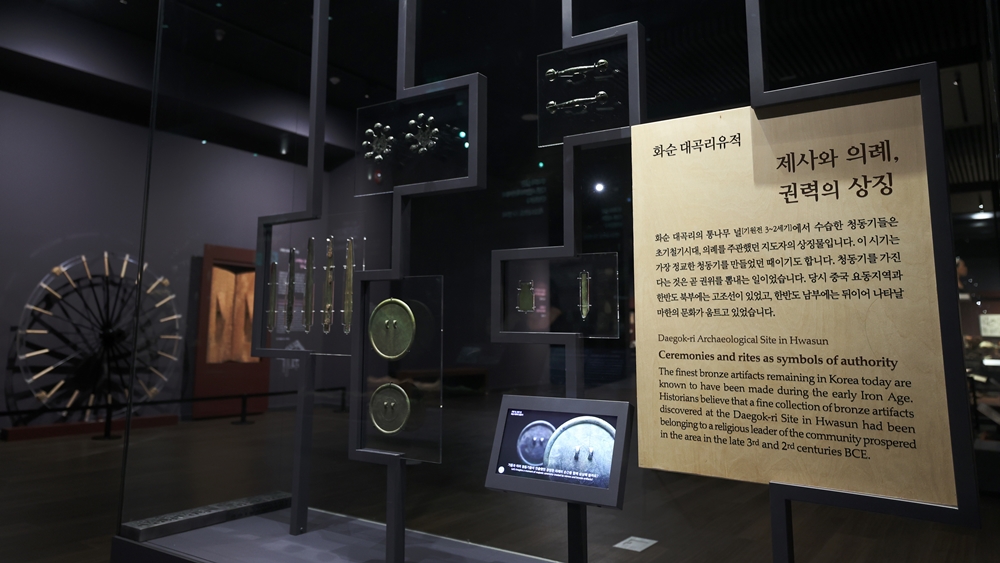
Thirteen pieces from the Bronze Artifacts from Daegok-ri, Hwasun, a collection designated a National Treasure in 1972, are on display at Gwangju National Museum in Gwangju. (Lee Jun Young)
History Culture Gallery 1 and 2 on the museum's second floor show how the people of Gwangju and Jeollanam-do lived from the Old Stone (Paleolithic) Age to the era of the Three Kingdoms -- Goguryeo (37 B.C.- A.D. 668), Baekje (18 B.C.- A.D. 660) and Silla (57 B.C.- A.D. 935), which later absorbed the other two kingdoms. One relic here has a fascinating story.
In 1971, 11 bronze items were discovered during construction of a drainage ditch at a farm in the village of Daegok-ri in Hwasun-gun County, Jeollanam-do: three Korean-style daggers, two mirrors with fine patterns, four bronze bells (two with eight heads and two with twin heads), one roughly finished axe and one engraver. In another excavation 37 years later, the museum found another two Korean-style bronze daggers.
These relics were found at a wooden chamber tomb with a stone mound. A wooden coffin was placed inside a square pit deep in the ground, buried and covered with three or four layers of stones.
Because they were placed in a tomb with the deceased, these bronze items displayed refined and sophisticated craftmanship in giving a glimpse at advanced bronze production technology. Though unknown, the tomb's owner is believed to have wielded considerable power and control at the time.
Associate curator Choi Jungah said, "Each of the bronze artifacts from Daegok-ri, Hwasun is important but even more so since 13 of them were excavated at one tomb."
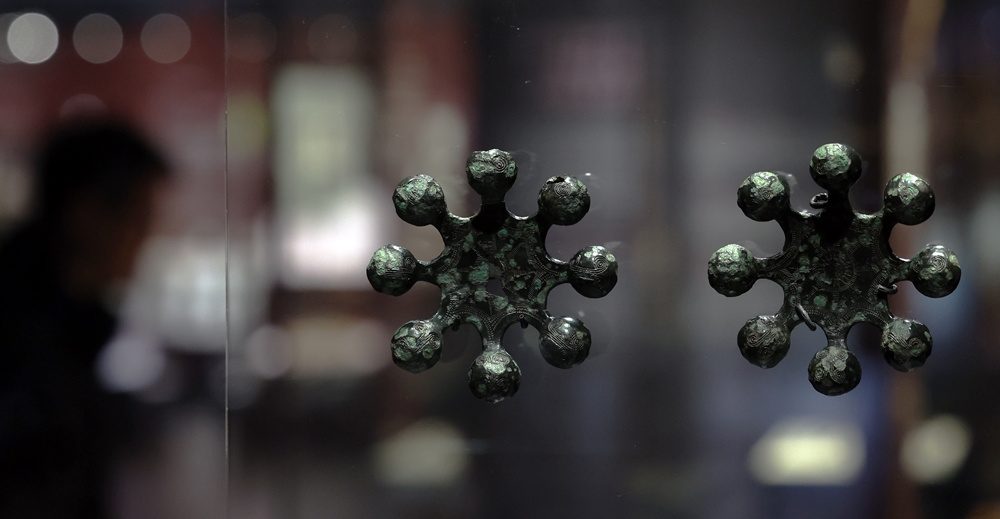
Resembling the starfish due to their radially spreading shape with a bell at each edge, these two bronze bells with eight heads were found in the village of Daegok-ri in Hwasun-gun County, Jeollanam-do Province. (Lee Jun Young)
The eight-headed bronze bells from Daegok-ri are especially eye-catching. The small loops at the center of the bells might mean that they were for hanging somewhere.
"Among similar bronze remains found elsewhere, these are the first to have their site of discovery identified," Noh said on why these relics are important.
#Gwangju National Museum: hub of Asian ceramic culture
In 1975, a fisherman on Jeungdo Island in Sinan-gun County, Jeollanam-do, found in his nets a celadon porcelain vase from a Chinese trading ship that sank 652 years earlier in 1323. Another 24,000 items have since been discovered through underwater excavations, most of which are now housed at Gwangju National Museum.
The Asian Ceramics Gallery on the museum's first floor shows the flow of ceramic culture in Asia. Visitors can find relics discovered underwater in Sinan-gun, earthenware and ceramics made millennia ago.
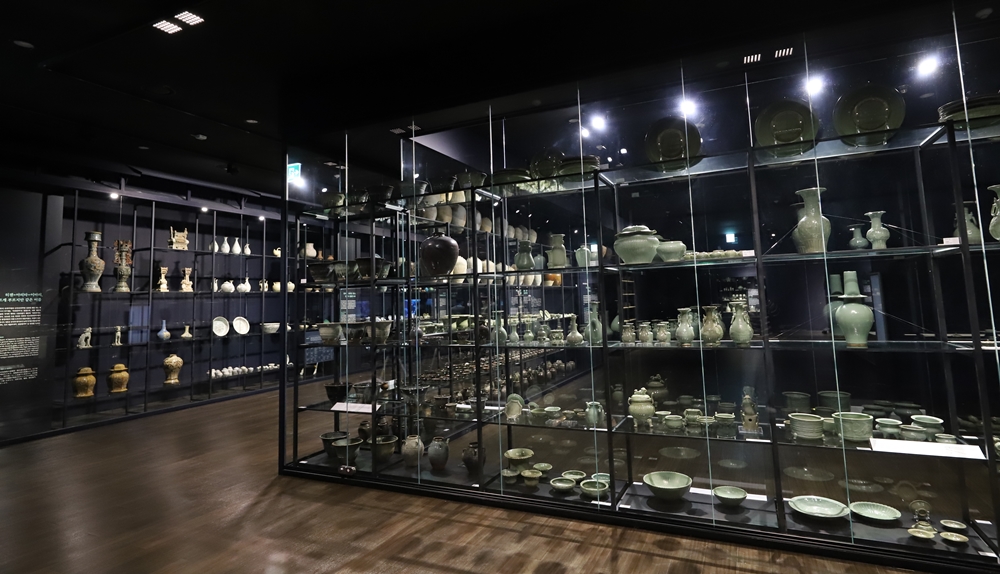
Gwangju National Museum owns 19,000 of a combined 24,000 relics found underwater in 1975 in Sinan-gun County, Jeollanam-do Province. The Asian Ceramic Gallery displays ceramics from both Korea and Asia including 1,150 pieces found underwater in the county. (Gwangju National Museum)
With its vast artifact collection as a cornerstone, the museum plans to open a ceramic culture center under its grand vision of emerging as a base of exchange for Asian ceramic culture.
The proposed facility will contain comprehensive information on the diverse history and culture of Asian ceramics centered on those from Korea, including Gwangju and Jeollanam-do. The two-story venue will cover 7,137 square m with three galleries featuring domestic ceramic culture, relics found underwater in Sinan-gun and videos of new technology convergence content.
The center is under construction and scheduled to open next year.
caudouin@korea.kr
Most popular
- First hearing-impaired K-pop act hopes for 'barrier-free world'
- 'Mad Max' director impressed by 'cinema-literate' Korean viewers
- Romanian presidential couple visits national cemetery
- 'Korean mythology is just as wonderful as Greek and Roman'
- Hit drama 'Beef' wins awards from 3 major Hollywood guilds




